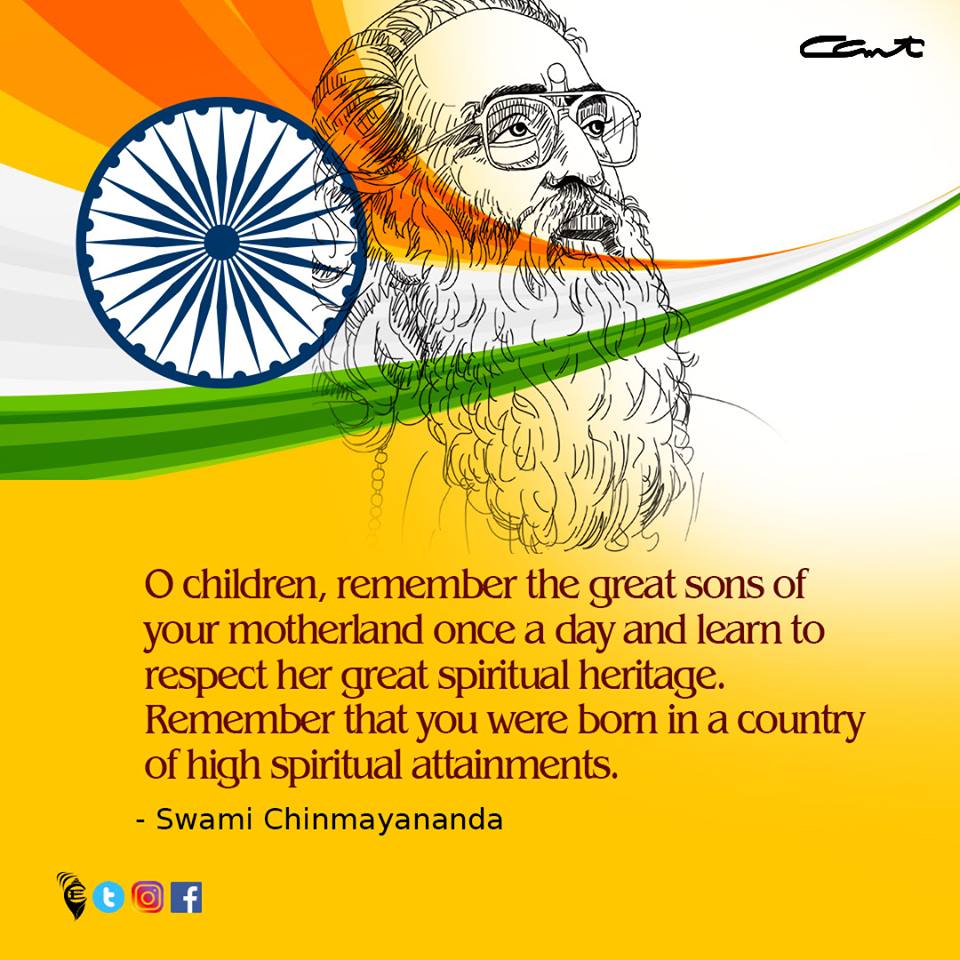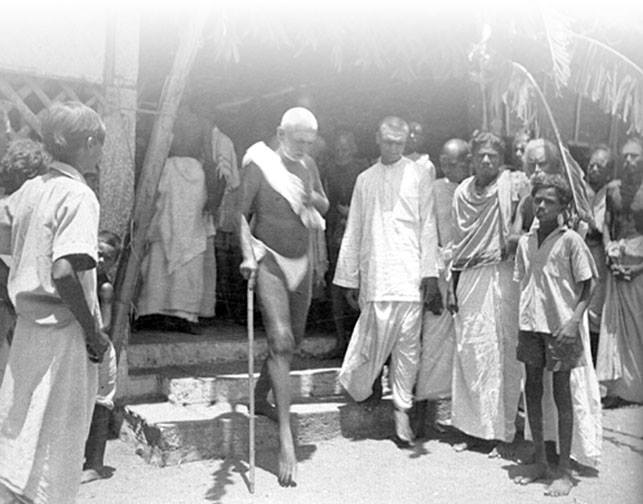635-SWAMI SIVANANDA.
-------------------------------------------------------------------------------------------------------------------------
-----------------------------------------------------------------------------------------------------------------------
Monday, November 8, 2021. 6:00.AM.
SANATANA DHARMA OTHERWISE HINDUISM
----------------------------------------------------------------------------------------------------------------------
1. Introduction :
Hinduism is the religion of the Hindus. It is the oldest of all living religions. Hinduism is not a man-made religion. It was not founded by any single person. It is not based on a set of dogmas preached by a particular set of teachers. It was not started as a system, like Islam or Christianity. It is the product of the seers of the Vedas. It was developed from age to age by the teachings of Avataras, Rishis, Vedas, the Upanishads, the Gita and the Itihasas. It will exist as long as the world lasts. There is a peculiar, mysterious spiritual force that is ingrained in the heart of every Hindu.
Hinduism is also known by the names Sanatana Dharma and Vaidika Dharma. Sanatana Dharma means eternal religion, the Ancient Law. Vaidika Dharma means the religion of the Vedas. The Vedas are the foundational scriptures of Hinduism.
2. A Religion of Freedom :
Hinduism allows absolute freedom to the rational mind of man. Hinduism never demands any undue restraint upon the freedom of human reason, the freedom of thought, feeling and will of man.
Hinduism is a religion of freedom. It allows the widest freedom in matters of faith and worship. It allows absolute freedom to the human reason and heart with regard to questions such as the nature of God, soul, creation, form of worship, and goal of life. It does not force anybody to accept particular dogmas or forms of worship. It allows everybody to reflect, investigate, enquire and cogitate. Hence, all sorts of religious faiths, various forms of worship or Sadhana, diverse kinds of rituals and customs, have found their honourable place side by side within Hinduism, and are cultured and developed in harmonious relationship with one another.
Hinduism, unlike other religions, does not dogmatically assert that the final emancipation is possible only through its means and not through any other. It is only a means to an end, and all means which will ultimately lead to the end are equally approved.
The religious hospitality of Hinduism is proverbial. Hinduism is extremely catholic and liberal. This is the fundamental feature of Hinduism. Hinduism pays respects to all religions. It does not revile any other religions. It accepts and honours truth, wherever it may come from and whatever garb it may put on.
3. Hindu Mythology :
In every religion, there are three parts, viz., philosophy, mythology and ritual. Philosophy is the essence of religion. It sets forth its basic principles or fundamental doctrines or tenets, the goal, and the means of attaining it. Mythology explains and illustrates philosophy by means of legendary lives of great men or of supernatural beings. Ritual gives a still more concrete form of philosophy so that everyone may understand it. Ritual consists of forms and ceremonies.
Mythology is a part of every religion. Mythology is concretized philosophy. Mythology is the science which investigates myths or fables or legends founded on remote events, especially those made in the early period of a people’s existence. Mythology inspires the readers through precepts and laudable examples, and goads them to attain perfection or the highest ideal. The abstract teachings and subtle ideas are made highly interesting through the garb of stories, parables, legends, allegories and narratives. The sublime and abstract philosophical ideas and ideals of Hinduism are taken straight to the heart of the masses through impressive stories. Mythology is slightly mixed up with a little history. It is difficult to make a fine distinction between history and mythology.
There are great truths behind the ancient mythology of Hinduism. You cannot ignore a thing simply because it has a garb of mythology. Do not argue. Keep your intellect at a reasonable distance when you study mythology. Intellect is a hindrance. It will delude you. Give up arrogance, vanity. Cultivate love for imagery. Sit like a child and open your heart freely. You will comprehend the great truths revealed by mythology. You will penetrate into the hearts of the Rishis and sages who wrote the mythology. You will really enjoy mythology now.
You study geography through maps. There is no real country or town in a map, but it helps you to know a great deal about the different countries. Similar is the case with myths. You can grasp the subtle, philosophical truths through myths only. The object of myth and legend is merely to lure the mind to the truths of religion.
4. Emphasis on Practice :
Hinduism is not a religion of mere theories. It is eminently practical. In no religion will you find such a variety of Yoga practiced, and such sublime unique philosophy expounded.
Hinduism provides spiritual food and Yoga Sadhana for all sorts of people to suit their temperaments, capacities, tastes, stages of spiritual development, and conditions of life. It prescribes Yoga Sadhana even for a scavenger or a cobbler to attain God-realization, while doing his ordinary avocation in the world. Hindu Yoga and Vedanta teachers lay great stress on self-restraint, Tapas, renunciation and practical Sadhana, which are best calculated to control the mind and the senses and unfold the Divinity within or attain Self-realization.
Religion is the practical aspect of philosophy. Philosophy is the rational aspect of religion. The philosophy of Hinduism is not armchair philosophy. It is not meant for intellectual curiosity and vain discussion. Hindu philosophy is a way of life. The philosopher of Hinduism seriously reflects after hearing the Srutis (Vedas), does Atma-vichara (enquiry into the nature of the Self), constantly meditates, and then attains Self-realization or Atma-sakshatkara. Moksha (liberation from birth and death) is his goal. He attempts to attain Jivanmukti (liberated being) now and here.
5. Law of Karma :
The Law of Karma is one of the fundamental doctrines of not only Hinduism, but also of Buddhism and Jainism. As a man sows, so shall he reap. This is the law of Karma.
Desire produces Karma. You work and exert to acquire the objects of your desire. Karma produces its fruits as pain and pleasure. You will have to take births after births to reap the fruits of your Karmas. This is the law of Karma.
The doctrine of reincarnation or transmigration is a fundamental tenet of Hinduism. You will not cease to exist after death. Before this birth you have passed through countless lives. The word ‘reincarnation’ literally means coming again into a physical body. The individual soul takes again a mortal vehicle. The individual soul takes again a mortal vehicle. The word ‘transmigration’ means passing from one plane to another-passing into a new body.
The doctrine of rebirth is a corollary to the law of Karma. The differences of disposition that are found between one individual and another must be due to one’s respective past actions. Past action implies past birth. Further, all your Karmas cannot certainly bear fruit in this birth alone. Therefore, there must be another birth for enjoying the remaining actions. Each soul has a series of births and deaths. Births and deaths will continue till you attain knowledge of the Self.
You do not come into the world in total forgetfulness and in utter darkness. You are born with certain memories and habits acquired in the previous births. Desires take their origin from previous experiences. We find that none is born without desire. Every being is born with some desires, which are associated with the things enjoyed by him in the past life. The desire proves the existence of his soul in the previous lives.
Man contains within himself infinite possibilities. The magazine of power and wisdom is within him. He has to unfold the Divinity within. This is the object of living and dying.
6. Hindu Sects :
A foreigner is struck with astonishment when he hears about the diverse sects and creeds of Hinduism. But, these varieties are really an ornament to Hinduism. They, certainly, are not its defects. There are various types of mind and temperament. So, there should be various faiths also. This is but natural. This is the cardinal tenet of Hinduism. There is room in Hinduism for all types of souls-from the highest to the lowest-for their growth and evolution.
The term Hinduism is most elastic. It includes a number of sects and cults, allied, but different in many important points. Hinduism has, within its fold, various schools of Vedanta, Saivism, Saktism, Vaishnavism, etc. It has various cults and creeds. It is more a league of religions than a single religion with a definite creed. It is a fellowship of faiths. It is a federation of philosophies. It accommodates all types of men. It prescribes spiritual food for everybody, according to his qualification and growth. This is the beauty of this magnanimous religion. This is the glory of Hinduism. Hence there is no conflict among the various cults and creeds.
Sanatan Dharmists, Arya Samajists, Deva Samajists, Jains, Sikhs and Brahmo Samjists are all Hindus only. Despite all the difference of metaphysical doctrines, modes of religious discipline, and forms of ritualistic practices and social habits prevalent in the Hindu society, there is an essential uniformity in the conception of religion, and in the outlook on life and the world, among all sections of Hindus.
7. Glory of Hinduism :
Muslim emperors ruled India for seven hundred years. The British ruled India for two hundred years. Some joined Islam through force. The Muslim emperors and the British were not able to convert the whole of India. Still the glory of Hinduism persists. The culture of Hinduism prevails. Nothing can shake its greatness and root.
Hinduism is neither asceticism nor illusionism, neither polytheism nor pantheism. It is a synthesis of all types of religious experiences. It is a whole and complete view of life. It is characterized by wide toleration, deep humanity and high spiritual purpose. It is free from fanaticism. That is the reason why it has survived the attacks of the followers of other great religions of the world.
Hinduism is extremely catholic, liberal, tolerant and elastic. No religion is so very elastic and tolerant like Hinduism. Hinduism is very stern and rigid regarding the fundamentals. It is very elastic in readjusting to the externals and non-essentials. That is the reason why it has succeeded in living through millennia.
The foundation of Hinduism has been laid on the bedrock of spiritual truths. The entire structure of Hindu life is built on eternal truths, the findings of the Hindu Rishis or seers. That is the reason why this structure has lasted through scores of centuries.
Hinduism stands unrivaled in the depth and grandeur of its philosophy. Its ethical teachings are lofty, unique and sublime. It is highly flexible and adapted to every human need. It is a perfect religion by itself. It is not in need of anything from any other religion. No other religion has produced so many great saints, great patriots, great warriors, great Pativratas (chaste women devoted to their husbands). The more you know of the Hindu religion, the more you will honour and love it. The more you study it, the more it will enlighten you and satisfy your heart.
END.
=========================================================================






Comments
Post a Comment